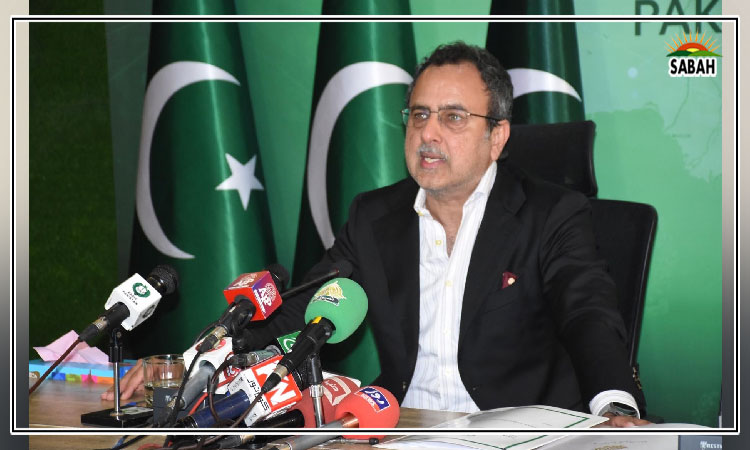Looking ahead to 2024…Sara Danial
Pakistan continues to struggle against its descent into soaring inflation and escalating interest rates. However, this resistance is accompanied by a significant expense, particularly evident in the form of exceedingly high government spending. As the next election approaches, the likelihood of a potential economic downturn or recession is expected to increase.
Political uncertainty casts shadow on markets: Alongside an ambiguous blend of unemployment and inflation, investors face numerous other potential risks in 2024. The certainty of three major elections in the US, the UK and India adds to the mix, and yet predicting the outcome and policies of Pakistans elections remains premature. However, it is evident that the mounting political global uncertainty will majorly decide Pakistans fate.
Regardless of political leanings, the Pakistan government will encounter heightened pressure to tackle soaring debt and excessive deficits. Financial markets (fintech, EMIs) might transform into referees, overseeing the appropriateness of any proposed spending plans.
Reasons for optimism: While the macroeconomic prospects for 2024 may not instil much enthusiasm, it is crucial not to underestimate the private sectors resilience in adapting to and navigating uncertain circumstances. Encouragingly, there are signs of hope. First, corporate balance sheets remain largely robust. Many companies capitalized on reduced interest rates during the pandemic, extending their debt at lower costs and increasing its average maturity.
Second, innovation continues to progress steadily, especially in the exponential adoption of artificial intelligence (AI). This could pave the way for one of the most rapid technological revolutions. The tangible effects of AI might be evident as early as next year, impacting areas such as employment (potentially negative), productivity, or profitability (potentially positive).
Last, many investors and forecasters hold a more reserved outlook for the future. While this alone might not avert a slowdown, it creates ample space for positive surprises if the data outperform expectations, even if only marginally.
A majority of risks can be foreseen by investors. The genuine threat lies in an unexpected event that catches everyone off guard. Because it hasn’t been factored into assessments, such a surprise can cause significant disruption. The Covid-19 pandemic, the war in Ukraine and the latest crisis in Gaza are some examples of unknown unknowns that were not on most investors radar until shortly before their emergence.
There is no basis to assume that 2024 will not bring its set of surprises. But the only way to address these risks is through proper diversification and a steadfast commitment to investment objectives. As witnessed during these periods of uncertainty and market strain, the recovery can be as unforeseeable as the initial shock.
Its not all negative: While the focus has been on potential negative surprises, positive unexpected events might arise in 2024. Whether it is a notably resilient global economy, the quicker-than-expected easing of inflationary pressures, a geopolitical detente in the Middle East, or a groundbreaking technological leap, the upcoming year could prove to be more robust than anticipated.
It is also crucial not to underestimate the adaptability and innovation of societies, companies and financial markets in response to environmental changes. Therefore, despite the anticipated risks, remaining invested in financial markets will likely remain the most suitable strategy for those with a longer-term time horizon.
Several factors are anticipated to shape the future landscape. The country is expected to grapple with a balancing act between economic recovery and addressing challenges like inflation and fiscal deficits. Efforts to stabilize the economy and stimulate growth may continue, focusing on sectors such as agriculture, manufacturing, and technology/IT.
Pakistans business community might see a push towards further digitization and technological integration, fostering innovation and efficiency. However, persistent geopolitical tensions in the region and global economic uncertainties pose obvious challenges. Initiatives aimed at improving infrastructure, enhancing energy security, and fostering a favourable investment climate might gain traction to attract foreign investment and spur economic development.
Overall, Pakistans economic and business outlook for 2024 is poised with a mix of opportunities and challenges, requiring adaptive policies and strategies to navigate effectively.
The path forward: Assuming the trends persisted, the year 2024 might present a mix of cautious optimism and persistent struggles. The economy, though showing signs of gradual recovery, may still bear the brunt of prior setbacks. The ongoing political turbulence might continue to cast shadows over economic stability and progress.
Amidst the economic and political challenges, Pakistan could witness some positive strides in specific sectors by 2024. Efforts to bolster the technology and IT industry might show promising growth, fuelled by a burgeoning young population eager to delve into these fields. Initiatives to promote entrepreneurship and innovation could lead to an expanding startup culture, contributing to employment opportunities and potentially diversifying the economy.
Additionally, infrastructural developments, particularly in transportation and connectivity projects such as the China-Pakistan Economic Corridor (CPEC) and the China-Pakistan Digital Corridor (CPDC), might start showing tangible benefits, fostering regional trade and economic integration.
While efforts towards economic recovery and stability may be ongoing in 2024, Pakistan might still find itself navigating a precarious balance between political strife and economic progress, needing concerted and sustained efforts to overcome these challenges and pave the way for a more stable future.
Courtesy Dawn












